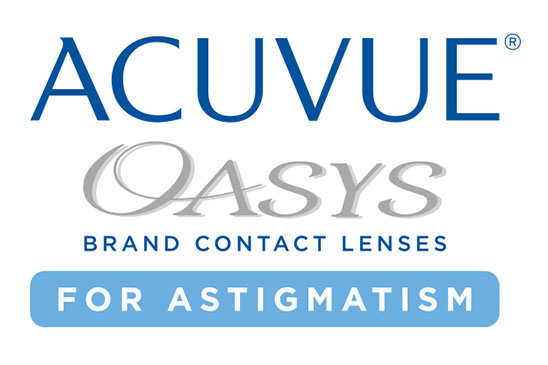WE ARE A COMPLETE OPTOMETRY CENTER WITH A FULL LINE OF PRODUCTS FOR EYE CARE AND WEAR
Our friendly and knowledgeable staff will first help you choose eyewear that suits you and your lifestyle. Then we will discuss the many lens options available to you which include anti-reflective coating, polycarbonate material, transitions, and many more.
To ensure that patient’s receive the best comprehensive care, we dispense spectacle lenses that exceed government standards for the optical industry. Our beautiful frame dispensary stocks hundreds of frames which enable us to provide for most patients’ tastes and styles. We only carry frames from manufacturers who have a history of being industry leaders in quality and innovation.
FRAMES AND SUNGLASSES
We carry an assortment of high quality frames and sunglasses from the top designers. With a wide selection in every price range, we have everything to fit everyone’s active lifestyle.
We also carry a large line of non-designer frame which are very comparable in quality and design of designer frames. You are getting a high quality look at an affordable price.
High index lenses can be up to 50% thinner than regular standard plastic lenses and much lighter too. They are generally recommended for higher prescriptions to decrease the weight of the lenses in eyeglass frames and cosmetically look better too! Most people with high prescriptions would like to avoid a “bottle eye” look when it comes down to their lenses.
High index lenses comes in various price points due to the technology and difficulty of manuafacturing them. Typically the thinner the lens, the higher the price point in comparison the the basic and traditionaly standard plastic lens.
Generally, lenses with a higher index of refraction will be thinner (and usually more expensive) than lenses with a lower index. The index of refraction of regular plastic lenses is 1.50. The refractive index of high index plastic lenses ranges from 1.60, 1.67, 1.71, and 1.74. Those in the range of 1.60 are about 20% thinner than regular plastic lenses, whereas 1.74 high index lenses are about half the thickness of regular plastic lenses.
Most popular lens designs (single vision, bifocal, progressive, photochromic, etc.) come in high-index materials, and your doctor or optician will know which ones are available in your prescription. Bifocal and trifocal high index lenses are also available, though the selection is more limited.
High index lenses reflect more light than regular plastic lenses, therefore anti-reflective coating is highly recommended for these lenses.
Strong, Safe, Lighter, Thinner with a built in Scratch resistance and UV coating.
Polycarbonate lenses offer superior impact resistance. These lenses are up to 10 times more impact resistant than regular plastic lenses, making them an ideal choice for children’s eyewear, safety glasses, monocular patients, firefighters, policeman, and for anyone with an active lifestyle who wants a thinner, lighter, safer lens.
Polycarbonate lenses have a refractive index of 1.59, making them approximately 25 to 30% thinner than regular plastic lenses. They are also up to 30% lighter than regular plastic lenses, making them a good choice for anyone with a high prescription, better cosmetically looking lens, half rim, and rimless frames.
Less reflection, cosmetically more appealing, less eyestrain, optically clearer.
All eyeglass lenses reflect some light, reducing the amount of light that enters the eye. This can have an impact on vision, especially under low-light conditions, like when driving at night. It also impacts your vision especially in front of a computer screen. The glare from light sources can also cause eye fatigue.
Lens can come with glare or without glare. Standard plastic lenses have glare from light sources and approximately 89% of the light that travels through the lens makes it directly into the eye. Lens coating with the anti-reflective coating reduces glare and therefore allows approximately 99% of the light to travel into the eyes. This helps with optical clarity, reduced eyestrain and fatigue, and helps others see your eyes more clearly without reflection.
Night time vision is also improved with an anti-reflection coating.
By eliminating surface reflections, anti-reflective coating also makes your lenses nearly invisible. This greatly improves the appearance of your eyewear and allows others to see your eyes, not the reflections in your glasses.
When cleaning lenses with anti-reflective coating, use only productst that are safe for anti-reflective treated lenses. Mild soap and warm water can sometimes be used to clean a AR coated lens. Never use an amonia product such as windex and the chemical is very harsh on the coated lens and can cause the AR coating to degrade and crack. AR coated lenses also tends to attract more smudge, be sure to use a cleaning cloth designed for eyeglass lenses and try not to use any abrasive materials that can scratch the AR coating.
No eyeglasses material is scratch proof, however, having scratch resistance coating can help prolong the life of the lens my minimizing normal wear and tear scratching. Whether it’s from dropping your glasses on the floor or occasionally cleaning them with a paper towel. Kids’ lenses, especially, benefit from a scratch-resistant hard coat.
Nearly all high index lenses and polycarbonate come with a factory-applied scratch-resistant coating for added durability. This coating is optional for regular plastic lenses. However, to safeguard your investment in your eyewear, scratch-resistant coating should be considered for all eyeglass lenses. The only exception is glass lenses, which are naturally hard and scratch-resistant.
To further protect your eyeglasses from scratches, keep your glasses in a protective case when you’re not wearing them. Also, never clean your lenses without first rinsing them with a cleaning solution or water. Do not use any amonia products such as windex on your lenses. Rubbing a dry, dusty or dirty lens with a cleaning cloth or towel can cause scratches, even on lenses with a scratch-resistant coating.
Just as you use sunscreen to keep the sun’s UV rays from harming your skin, UV treatment in eyeglass lenses blocks those same rays from damaging your eyes. Overexposure to ultraviolet light is thought to be a cause of cataracts, pingueculas, pterygiums, macular degeneration and other eye problems.
Most high index lenses have 100% UV protection built-in. But with regular plastic lenses, a lens treatment is required for these lenses to block all UV rays. This UV treatment does not change the appearance of the lenses and is quite inexpensive.
Changes color in direct sun light. Sun and clear lenses: Two in One.
Photochromic lenses are convenient indoor-outdoor eyeglass lenses that automatically darken to a sunglass shade outside when exposed to sunlight, and then return to a clear state indoors. Photochromic lenses darkens in seconds in direct sunlight or when exposed to UV light. These lenses clears up in a few minutes when going indoors. Photochromic lenses are convenient because it’s like having sunglasses and clear glasses “two in one”. Don’t forget that photochromic lenses do not darken will in the car because a car’s windshield and windows block off UV light need to activate the particle in the lenses to darken. These lenses also provide 100% protection from the sun’s UV rays, and are available in a wide variety of lens materials and designs, including bifocal and progressive lenses.
FRAME FITTING AND LENS OPTIONS FOR EYEGLASSES
Our friendly and knowledgeable staff will first help you choose eyewear that suits you and your lifestyle. We go the extra mile in determining that the frames you choose are well fitted and comfortable. And when it comes to choosing options for your eyeglasses, there are quite a few options that best suites your lifestyle and visual needs.
CONTACT LENSES
Today, contact lenses are available to correct for almost every imaginable vision problem for patients ranging from one month to more than ninety years of age. More importantly, contact lenses are incredibly safe and unlike other refractive options are totally reversible.
Not everyone is an ideal candidate for contact lenses. A separate contact lens fitting/evaluation is needed in order to receive a prescription and/or purchase contact lenses. The FDA classifies contact lenses as a medical device for the eyes and therefore a contact lens prescription expires one year from the written prescription date.
Contacts come in a variety of modalities. The doctor with fit you with either soft contacts or hard contacts (Rigid gas permeable lenses). There are pros and cons to both and your doctor will choose the best option for his/her patient.
We offer and fit our patients with a variety of contacts lenses that best suits their visual needs. To schedule an appointment for a lens evaluation please feel free to contact any of our representatives today
TYPES OF CONTACT LENSES
Astigmatism is a very common condition where the curvature of the front of the eye isn’t round, but is instead shaped more like a football or an egg. Astigmatism won’t keep you from wearing contact lenses – it just means you need a different kind of lens.Lenses specially designed to correct astigmatism are called “toric” lenses. Most toric lenses are soft lenses. Toric soft lenses are a little thicker than regular spherical contact lenses because they are designed to maintain proper alignment which keeps the lens from rotating on the eyes.In some cases, toric soft lenses may rotate too much on the eye, causing blur. If this happens, different brands that have different anti-rotation designs can be tried. If soft lens rotation continues to be a problem, gas permeable (GP) lenses (with or without a toric design) can also correct astigmatism.
Contract lens are designed to be hydrophilic (water loving). Contacts tend to absorb the moisture from the eyes causing eyes to become more dry. If a patient has pre-existing dry eyes, wearing contacts can aggravate the dry eye condition. Some symptoms of dry eyes are:
- A scratchy, gritty, sand paper type feeling
- Feeling as if something is rubbing or stuck in the eyes(like a loose eyelash)
- A burning sensation
- Eye redness (especially later in the day)
- Blurred vision
Daily disposable contacts are recommended for patients with allergies, travelers, patients that participate in water sports, patients that have a history of heavy protein deposits on their contacts, and patients who are inconvenienced with the cleaning and storage of their contacts.
Presbyopia is the normal loss of focusing ability up close when you reach your 40s.Today, there are many designs of bifocal and multifocal contact lenses to correct presbyopia. Another option for presbyopia is monovision. This is wearing a contact lens in one eye for distance vision and a lens in the other eye that has a modified power for near vision.During your contact lens fitting we can help you decide whether bifocal/multifocal contact lenses or monovision is best for you.
Keratoconus is a relatively uncommon eye condition where the cornea becomes steeper, thinner, and has an irregular surface. The exact cause of keratoconus remains unknown but has a hereditary component. It affects men more than women and usually affects patients after their teenage years. Finding an accurate prescription for a keratonus patient may be difficult. Glasses are recommend first. Hard contacts are a second treatment option before corneal transplant surgery is indicated.Gas permeable contact lenses are the treatment option of choice for mild and moderate keratoconus. Because they are rigid, GP lenses can help contain the shape of the cornea to prevent further bulging of the cornea. They also can correct vision problems caused by keratoconus that cannot be corrected with eyeglasses or soft contacts.In some cases, a soft contact lens is worn under the GP lens for greater comfort. This technique is called “piggybacking.” Another option for some patients is a hybrid contact lens that has a GP center, surrounded by a soft “skirt”.
Ortho-k contact lenses flatten your cornea without surgery, enabling light to focus properly on your retina, resulting in better vision. These lenses are worn at night time during sleep. Ortho-k lenses mold and reshape the cornea. After removing the lens in the morning, good vision is achieved without the need for eyeglasses or contacts the entire day. This process needs to be repeated on a nightly basis to maintain proper reshaping of the cornea.
Want to change, enhance or illuminate your eye color? For dark eyes or light eyes, even if your vision is perfect or you have astigmatism, we have the lenses for you.















